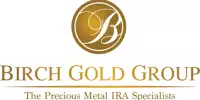Planning for retirement requires smart choices. Gold IRAs offer a way to diversify your retirement portfolio with precious metals.

The best Gold IRA custodians include Augusta Precious Metals, Goldco, and Birch Gold Group, who provide secure storage and IRS compliance for your retirement account. These companies make it easy to invest in gold and other precious metals while maintaining tax advantages.
Security and fees vary between custodians. Taking time to research options helps ensure your retirement savings are protected while potentially growing through precious metals investments.
Understanding Gold IRAs

Gold IRAs offer investors a way to include precious metals in their retirement strategy. They combine the tax advantages of traditional retirement accounts with the stability of physical gold and other precious metals.
What Is a Gold IRA?
A Gold IRA is a specialized self-directed Individual Retirement Account that allows investors to hold physical gold and other precious metals instead of paper assets. Unlike standard IRAs that typically contain stocks, bonds, and mutual funds, a Gold IRA holds IRS-approved gold coins or bullion.
These accounts must follow specific regulations. The gold must meet purity standards (usually 99.5% pure) and be stored in an IRS-approved depository. You cannot keep the gold yourself.
A Gold IRA works similarly to traditional IRAs regarding contribution limits and distribution rules. However, you’ll need a custodian who specializes in precious metals to manage your account.
Related: How Much Does a Gold IRA Cost?
Benefits of a Gold IRA
Gold IRAs provide several advantages for retirement planning. First, they offer portfolio diversification. Gold often moves independently from stocks and bonds, potentially reducing overall investment risk.
Physical gold serves as a hedge against inflation. When the dollar weakens, gold typically maintains or increases its value, protecting purchasing power.
These accounts also provide tax benefits similar to traditional IRAs. With a traditional Gold IRA, contributions may be tax-deductible, with taxes paid upon withdrawal. Roth Gold IRAs offer tax-free growth and withdrawals if certain conditions are met.
Gold has maintained value throughout history, giving investors confidence during economic uncertainty. Many financial advisors recommend allocating 5-15% of retirement portfolios to precious metals.
Selecting a Gold IRA Custodian

Finding the right custodian for your gold IRA involves understanding their role and evaluating several key criteria. Your choice will significantly impact the security and growth of your retirement assets.
Role of a Custodian
A Gold IRA Custodian is a financial institution approved by the IRS to hold precious metals on behalf of Individual Retirement Account holders. These custodians manage the paperwork and ensure all transactions comply with IRS regulations.
Unlike traditional IRA custodians, those specializing in gold IRAs have secure storage facilities for physical precious metals. They handle the purchase, storage, and eventual distribution of gold and other approved metals.
Custodians provide regular statements showing the value of metals in your account. They also manage the logistics of storing and insuring your physical gold.
Most importantly, they ensure your Self-Directed IRA remains compliant with all tax regulations, protecting your retirement investment from potential penalties.
Criteria for Choosing a Custodian
Experience and Reputation: Look for custodians with a proven track record in the gold IRA industry. Check online reviews, Better Business Bureau ratings, and consumer protection websites to verify their reputation.
Fee Structure: Compare fee schedules carefully. Typical fees include:
- Setup fees
- Annual maintenance charges
- Storage costs
- Insurance premiums
- Transaction fees
Storage Options: Reputable custodians offer segregated storage, keeping your metals separate from others. This ensures you receive the exact items you purchased.
Customer Service: Quality support is essential. Test their responsiveness before committing. Can they answer complex questions? How quickly do they respond?
Transparency: The best custodians provide clear information about all costs and processes. They should offer detailed statements and easy account access.
Insurance Coverage: Verify the custodian maintains adequate insurance for your metals in storage to protect against theft or damage.
Top Gold IRA Companies

When planning for retirement with precious metals, choosing the right custodian is crucial. The following companies stand out for their service quality, reputation, and customer satisfaction in the gold IRA industry.
Augusta Precious Metals
Augusta Precious Metals has built a strong reputation for exceptional customer service and transparency. They offer a unique one-on-one educational web conference designed by their on-staff Harvard-trained economist.
The company maintains an A+ rating with the Better Business Bureau and has nearly zero complaints over its operating history. Their pricing structure is straightforward with no hidden fees.
Augusta requires a $50,000 minimum investment, higher than some competitors, but this comes with lifetime customer support. Their specialists guide clients through the entire process.
They focus exclusively on gold and silver products, offering a more specialized approach than companies with broader precious metals selections.
Goldco
Goldco stands out for its comprehensive buyback program and excellent customer service. With an A+ BBB rating and thousands of positive reviews, they’ve established themselves as a trustworthy option for gold IRA investors.
Their minimum investment requirement of $25,000 makes them accessible to more investors than some competitors. Goldco offers a wide selection of IRS-approved gold and silver coins.
New accounts often receive promotions including free silver with qualifying investments. Their dedicated representatives stay with clients throughout the entire process.
Goldco’s educational resources include detailed guides about precious metals investing and retirement planning. Their transparent fee structure includes a one-time account setup fee and annual maintenance costs.
Birch Gold Group
Birch Gold Group has operated since 2003 and partners with Equity Trust as their primary custodian. They maintain an A+ rating with the BBB and high marks from the Business Consumer Alliance.
Their $10,000 minimum investment is one of the lower requirements in the industry, making precious metals IRAs more accessible to average investors. Birch offers a diverse selection of gold, silver, platinum, and palladium products.
Educational resources are a notable strength, with specialists who previously worked in financial sectors providing guidance. Their website includes comprehensive guides and a regular newsletter with market updates.
First-year fees are often waived for accounts over $50,000. Customer service representatives are known for their patience with new investors.
American Hartford Gold
American Hartford Gold specializes in both gold IRAs and direct precious metals delivery. Their family-owned business approach emphasizes personalized service with no high-pressure sales tactics.
With a low minimum investment of just $5,000, they’re among the most accessible options for beginning investors. They’ve maintained an A+ BBB rating and feature endorsements from several well-known personalities.
Their fee structure includes potential fee waivers for qualifying accounts. American Hartford offers a price match guarantee and buyback commitment without additional fees.
Educational resources include a free gold IRA guide and regular market updates. Their streamlined three-step process makes account setup straightforward for first-time precious metals investors.
Additional Noteworthy Companies
Several other companies deserve mention for their solid services in the gold IRA space. Patriot Gold Group offers a “No Fee for Life” IRA program for qualifying accounts and direct dealer pricing without sales representatives.
American Bullion pioneered the gold IRA rollover process and maintains strong educational resources for new investors. Their $10,000 minimum investment is reasonable compared to industry standards.
APMEX and JM Bullion, while primarily known as bullion dealers, also offer gold IRA services with vast product selections. Their online platforms provide easy access to current pricing.
Rosland Capital and Monetary Gold round out the options with competitive fees and solid customer service ratings, though they typically have higher minimum investments than some competitors.
Investment Process

The gold IRA investment process involves several key steps from account setup to purchasing precious metals. Understanding each phase helps investors navigate the process with confidence.
Opening a Gold IRA Account
Setting up a gold IRA account begins with selecting a reputable custodian. Most companies offer online applications that take 10-15 minutes to complete.
Required documents typically include:
- Government-issued photo ID
- Social security number
- Banking information
- Beneficiary details
Account minimums vary by custodian, ranging from $10,000 to $50,000. Some companies like Augusta Precious Metals require $50,000, while others like Birch Gold Group accept accounts starting at $10,000.
The approval process usually takes 1-3 business days. After approval, you’ll need to fund your account before purchasing metals.
Most custodians assign a dedicated account representative to guide you through the setup process and answer questions about investment options.
Rollovers and Transfers
Moving funds from an existing retirement account to a gold IRA can be done through rollovers or transfers.
IRA Transfers move funds directly between custodians without the money passing through your hands. This method avoids potential tax penalties and typically completes within 7-14 business days.
401(k) Rollovers allow you to move funds from employer-sponsored plans to a gold IRA. The 60-day rule applies—funds must be deposited within 60 days to avoid taxes and penalties.
You can typically roll over funds from:
- Traditional IRAs
- 401(k)s
- 403(b)s
- 457 plans
- Thrift Savings Plans (TSPs)
Most gold IRA custodians offer assistance with paperwork and coordinate with your existing custodian to ensure a smooth transfer process.
Buying and Selling the Metals
Once your account is funded, you can purchase IRA-approved precious metals. The IRS requires all gold to be at least 99.5% pure, with similar standards for other metals.
Popular investment options include:
- Gold coins: American Eagles, Canadian Maple Leafs, Austrian Philharmonics
- Gold bars: Various weights from 1 oz to 1 kg
- Other metals: Silver, platinum, and palladium products
Your custodian will help you select products that meet IRS requirements. After purchase, metals are shipped directly to an approved depository—not to your home.
Many custodians offer buyback programs when you’re ready to liquidate. These programs typically provide competitive market rates and streamlined selling processes.
The transaction to sell metals usually takes 3-5 business days to complete, with funds becoming available for distribution or reinvestment shortly after.
Fees and Costs

When investing in a gold IRA, understanding the complete fee structure is essential to protect your retirement savings. Different custodians have varying fee models that can significantly impact your long-term returns.
Understanding the Fee Structure
Most gold IRA custodians charge several types of fees. The annual maintenance fee typically ranges from $75 to $300, covering account administration and reporting services. This is a fixed cost regardless of account size.
Setup fees are one-time charges for opening your account, usually between $50 and $150. Some custodians waive this fee for larger initial investments.
Storage fees are unavoidable since IRS regulations require precious metals to be held by approved depositories. These fees range from $100 to $300 annually, depending on the storage method (segregated or non-segregated) and insurance coverage.
Transaction fees apply when buying or selling metals within your account. These can be flat rates ($25-$50 per transaction) or percentage-based (0.5%-1.5% of the transaction value).
Comparing Custodian Fees
The best gold IRA custodians offer transparent pricing with no hidden charges. When comparing options, consider the total cost structure rather than focusing on a single fee type.
| Custodian Type | Annual Fees | Setup Fees | Storage Fees |
|---|---|---|---|
| Premium | $200-300 | $0-100 | $150-250 |
| Mid-range | $150-200 | $50-100 | $100-150 |
| Budget | $75-150 | $50-150 | $100-200 |
Some custodians offer flat-rate fee structures that bundle all costs into one annual payment. This model works well for larger accounts but may be expensive for smaller investments.
Initial purchase requirements vary widely among custodians, typically ranging from $5,000 to $25,000. Higher minimums often come with fee discounts or waivers.
Hidden Costs to Watch Out For
Metal premiums represent the markup over spot price when purchasing gold. These can range from 3% to 30% depending on the product type and custodian. Reputable custodians maintain reasonable premiums of 5-10% for common gold products.
Liquidation fees may apply when selling metals or closing accounts. These can be flat fees ($25-$100) or percentage-based (0.5%-3% of metal value).
Wire transfer fees for deposits or withdrawals typically range from $25 to $50 per transaction. Some custodians pass these costs to clients while others absorb them.
Beware of scaling fee structures that increase as your account grows. The best custodians maintain consistent fees regardless of account value, allowing your investment to grow without penalty.
Storing Your Precious Metals

When investing in a gold IRA, secure storage of your precious metals is critical for both protection and IRS compliance. The right storage solution protects your investment while maintaining its tax advantages.
Secure Storage Options
IRS regulations require precious metals in an IRA to be stored with an approved custodian. You cannot keep these assets at home or in a personal safe deposit box. Most reputable gold IRA custodians partner with specialized storage facilities like Brink’s or Delaware Depository.
Segregated storage keeps your metals physically separate from other investors’ holdings. This option typically costs more but provides greater security and easier access when needed.
Commingled storage combines your metals with others in a secure vault. While less expensive, your specific coins or bars aren’t separated from the general inventory.
Some facilities offer both domestic and international storage options. Domestic storage provides easier access, while international options may offer additional diversification benefits.
Insurance and Safety
All reputable storage facilities maintain comprehensive insurance policies to protect against theft, damage, or loss. Coverage should equal 100% of the stored metals’ value.
Most premium facilities employ multiple security measures:
- 24/7 armed guards
- Advanced surveillance systems
- Biometric access controls
- Regular third-party audits
Storage fees typically range from 0.5% to 1% of your metals’ value annually. These fees cover both the physical storage and insurance costs.
When selecting a gold IRA custodian, review their storage partners’ security protocols and insurance coverage. Request documentation of their security practices and insurance policies before committing your precious metals to their care.
Legal and Regulatory Considerations

Gold IRAs operate under specific federal guidelines that protect investors and ensure compliance with retirement account regulations. Understanding these rules is essential before choosing a custodian for your precious metals IRA.
IRS Regulations on Gold IRAs
The Internal Revenue Service maintains strict rules about gold and other precious metals held in Individual Retirement Accounts. Not all gold products qualify for IRAs. The IRS requires metals to meet specific purity standards: gold must be 99.5% pure, silver 99.9% pure, and platinum and palladium 99.95% pure.
IRA-approved metals typically include:
- American Gold Eagle coins
- Canadian Gold Maple Leaf coins
- Australian Kangaroo/Nugget coins
- Gold bars and rounds from approved refiners
The IRS prohibits storing IRA gold at home. All precious metals must be held by an approved custodian in an IRS-approved depository. Violations can result in distributions being taxed as income, plus potential penalties.
Understanding Fiduciary Responsibilities
Custodians of Gold IRAs have fiduciary duties to their clients. This means they must act in the best interest of the account holder at all times. A fiduciary must protect assets, maintain accurate records, and provide regular statements and tax information.
Not all companies offering Gold IRAs are fiduciaries. Some function primarily as dealers or brokers. This distinction matters because fiduciaries have legal obligations to put client interests first.
Key fiduciary responsibilities include:
- Safeguarding physical assets
- Ensuring regulatory compliance
- Transparent fee disclosure
- Accurate reporting to the IRS
When selecting a custodian, investors should verify their credentials with the Better Business Bureau and review their history of regulatory compliance. Financial advisors recommend confirming whether potential custodians carry appropriate insurance for stored metals.
Managing Your Gold IRA

Effective management of your Gold IRA requires understanding performance metrics and implementing appropriate growth strategies. Regular monitoring and strategic adjustments help maximize the potential of precious metals in your retirement portfolio.
Assessing Performance and Risks
Gold IRAs respond differently to economic conditions than traditional investments. Market volatility often has an inverse relationship with precious metals, making them valuable during economic uncertainty.
When evaluating performance, compare your gold holdings against both inflation rates and traditional market indexes. This provides a more accurate picture of how well your metals are preserving wealth.
Be aware of storage fees and maintenance costs that can affect overall returns. These expenses typically range from 0.5% to 1% annually.
Key risk factors to monitor:
- Price fluctuations
- Changing tax regulations
- Storage security concerns
- Liquidity limitations
Document all transactions carefully for tax purposes. The IRS maintains strict reporting requirements for precious metal IRAs.
Strategies for Growth and Preservation
Diversification within your Gold IRA creates balance and stability. Consider including different precious metals rather than focusing solely on gold.
Recommended metal allocation:
- Gold: 50-60%
- Silver: 20-30%
- Platinum/Palladium: 10-20%
Dollar-cost averaging works well with precious metals. Regular small purchases help mitigate the impact of price volatility while building your position over time.
Review your allocation annually to ensure it aligns with your retirement timeline. Investors closer to retirement typically increase their precious metal holdings to preserve wealth.
Consider rebalancing when gold prices experience significant movement. This maintains your desired risk profile and capitalizes on market shifts.
Professional wealth management services can provide valuable guidance for complex portfolios. Their expertise helps navigate changing market conditions and optimize investment returns.
Conclusion

Choosing the right Gold IRA custodian is an important step for retirement planning. The best custodians offer secure storage, reasonable fees, and excellent customer service.
When you Invest in Gold through an IRA, you gain potential protection against inflation and market volatility. Gold often performs well when traditional investments struggle, making it a smart addition to many retirement portfolios.
Your Retirement Account deserves careful consideration. Take time to research each company’s reputation, fee structure, and storage options before making a decision.
Top Gold IRA Custodians typically provide:
- Transparent fee structures
- Secure storage facilities
- Helpful educational resources
- Responsive customer service
- Simple account setup processes
Remember to verify that any custodian you consider is properly licensed and insured. This protects your investment and gives you peace of mind about your retirement savings.
The custodian you select should align with your investment goals and comfort level. Some investors prefer custodians with more hands-on guidance, while others value lower fees and self-directed options.
Regular account reviews are recommended to ensure your gold investments continue to meet your retirement objectives. The best custodians make this process simple and straightforward.
Frequently Asked Questions
Gold IRAs involve important decisions about retirement savings and precious metals investing. These questions address key aspects to consider before choosing a custodian and setting up your investment.
What factors should be considered when choosing a gold IRA custodian?
Fees structure is a critical factor when selecting a gold IRA custodian. Companies charge various fees including setup fees, annual maintenance fees, storage fees, and transaction fees.
Experience and track record matter significantly. Custodians with extensive experience in precious metals typically provide better guidance and face fewer operational issues.
Customer service quality can make a substantial difference in the investing experience. Responsive representatives who thoroughly address questions indicate a reliable custodian.
Storage options and security measures should be carefully evaluated. The best custodians offer segregated storage in IRS-approved depositories with robust security protocols and insurance coverage.
Can you explain the main differences between a gold IRA and physical gold investments?
Tax treatment represents the primary difference between these investment types. Gold IRAs offer tax advantages that direct physical gold ownership does not, including tax-deferred growth or tax-free growth in Roth accounts.
Regulatory requirements differ significantly. Gold IRAs must follow IRS rules regarding eligible metals, purity standards, and approved storage facilities.
Physical gold investments provide direct possession and control of assets. Investors can store their gold at home or in private vaults without IRS restrictions.
Liquidity varies between the options. Physical gold can be sold quickly to local dealers, while gold IRA assets typically require more paperwork and processing time for distributions.
What are some of the pros and cons associated with investing in a gold IRA?
Gold IRAs offer portfolio diversification by providing a hedge against inflation and economic uncertainty. Precious metals often move independently of stocks and bonds.
Tax advantages include potential tax-deferred growth or tax-free withdrawals depending on the account type. This can significantly impact long-term returns.
The downside includes higher fees compared to traditional IRAs. Setup costs, annual maintenance, storage, and insurance fees can reduce overall returns.
Limited accessibility is another drawback. Assets in a gold IRA cannot be personally held or accessed until qualifying distribution conditions are met.
How does one evaluate the credibility and reputation of a gold IRA company?
Industry accreditations from organizations like the Better Business Bureau (BBB) and Business Consumer Alliance provide insight into a company’s standing. High ratings suggest trustworthiness and quality service.
Customer reviews offer valuable perspectives on real experiences. Patterns in feedback about responsiveness, transparency, and problem resolution indicate service quality.
Complaint history with consumer protection agencies reveals potential red flags. Companies with numerous unresolved complaints should prompt caution.
Longevity in the industry often correlates with stability and reliability. Companies that have successfully operated through various economic cycles demonstrate resilience.
What steps should an investor take to roll over an existing IRA into a gold IRA?
Research and select a reputable gold IRA custodian based on fees, services, and customer reviews. This foundational step determines the overall experience and costs.
Open a self-directed IRA account with the chosen custodian. This specialized account allows for holding alternative assets like precious metals.
Complete transfer paperwork to move funds from the existing retirement account to the new gold IRA. This can be done as a direct trustee-to-trustee transfer to avoid tax complications.
Select IRS-approved precious metals for purchase within IRS guidelines. The custodian will facilitate the purchase and arrange for secure storage at an approved depository.
What are some of the key indicators of a reliable and efficient gold IRA custodian?
Transparent fee structures with no hidden costs indicate trustworthiness. Reliable custodians clearly disclose all charges upfront and avoid pressure tactics.
Educational resources demonstrate commitment to informed investing. Quality custodians provide comprehensive information without excessive sales pressure.
Efficient processing of transactions and paperwork reflects operational competence. Delays or errors in handling transfers can signal organizational issues.
Clear communication about storage arrangements and visitation policies shows attention to security details. Reputable custodians maintain relationships with established, insured depositories.



